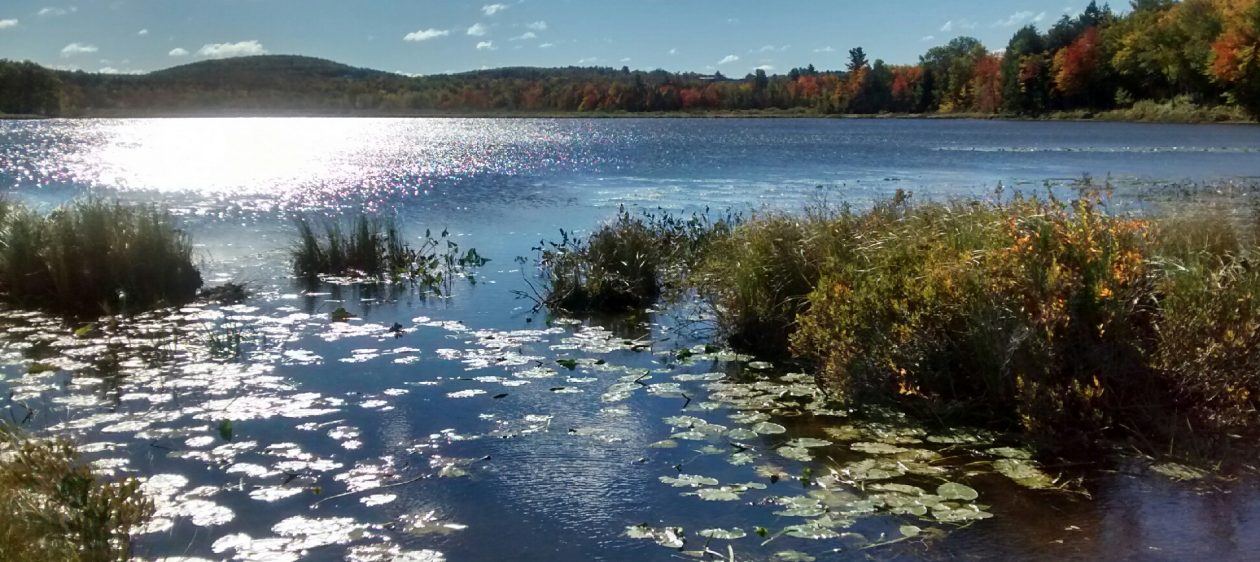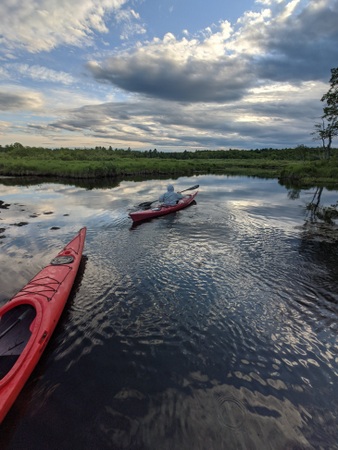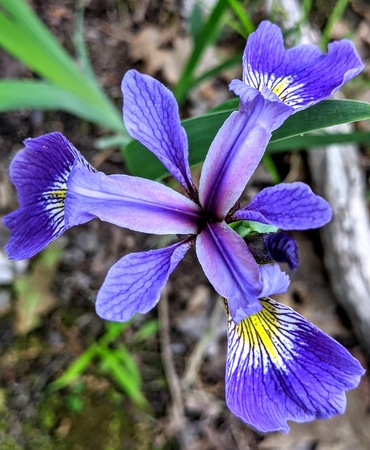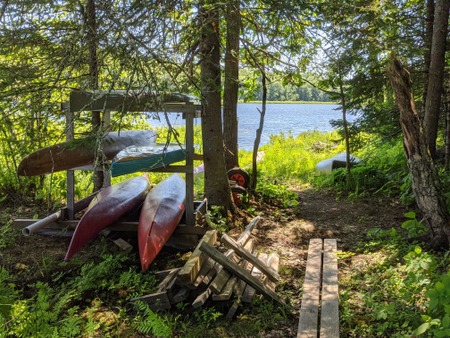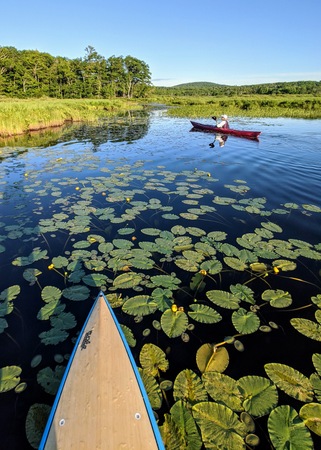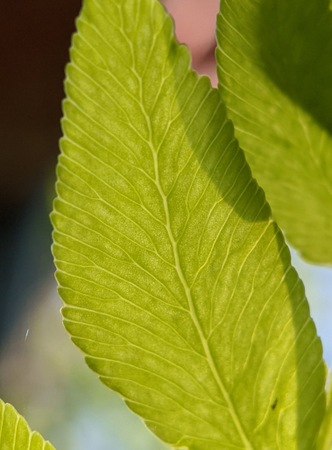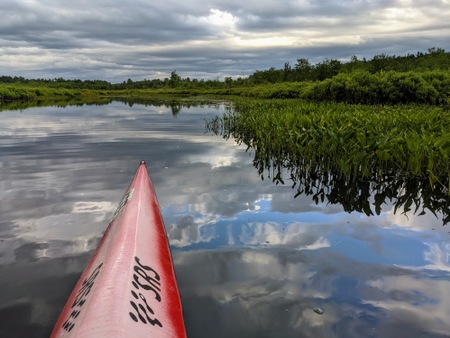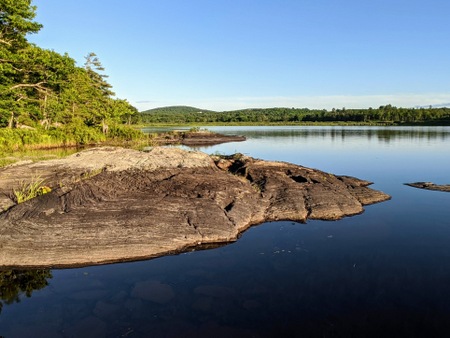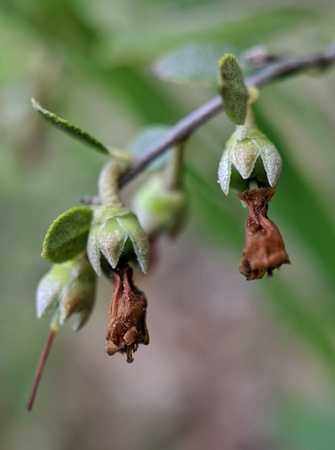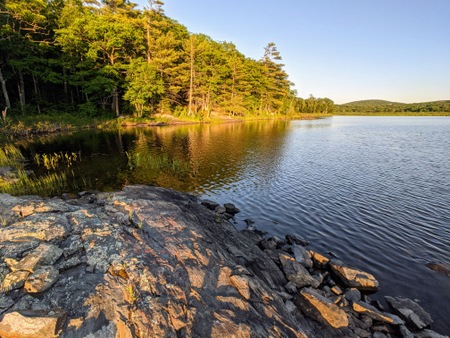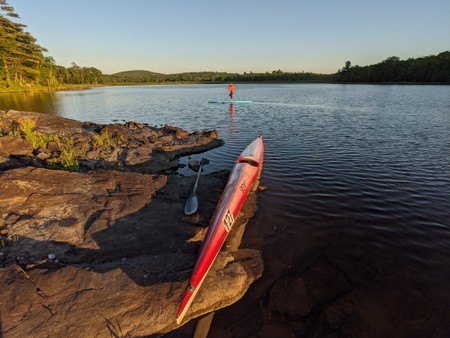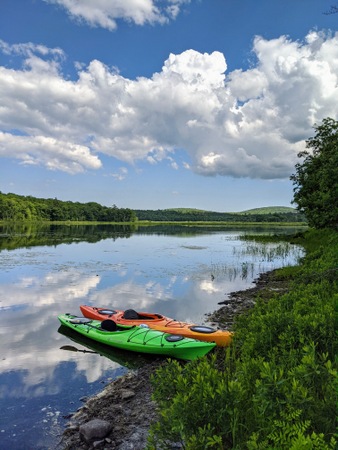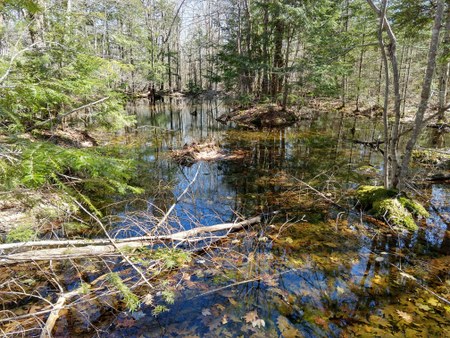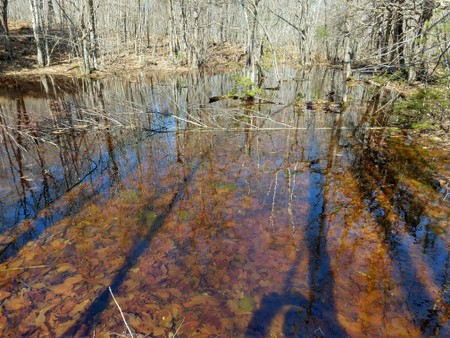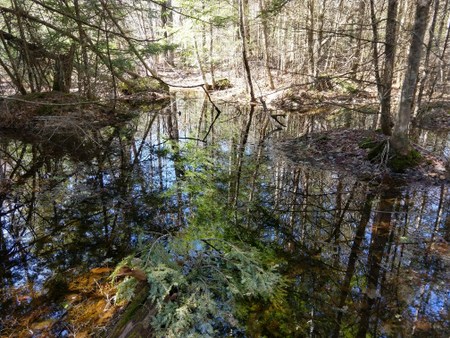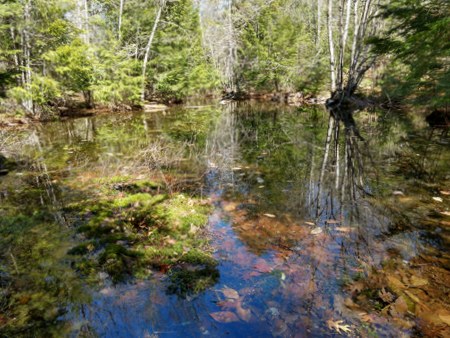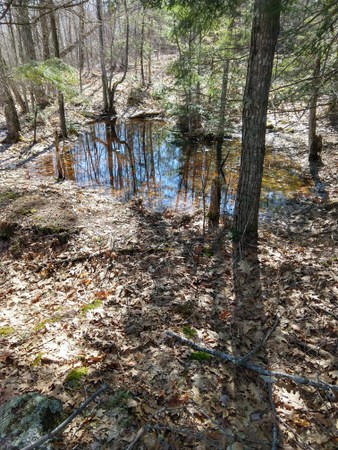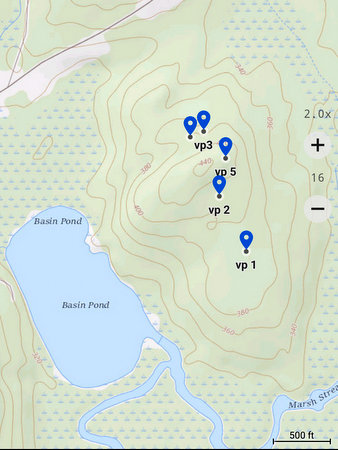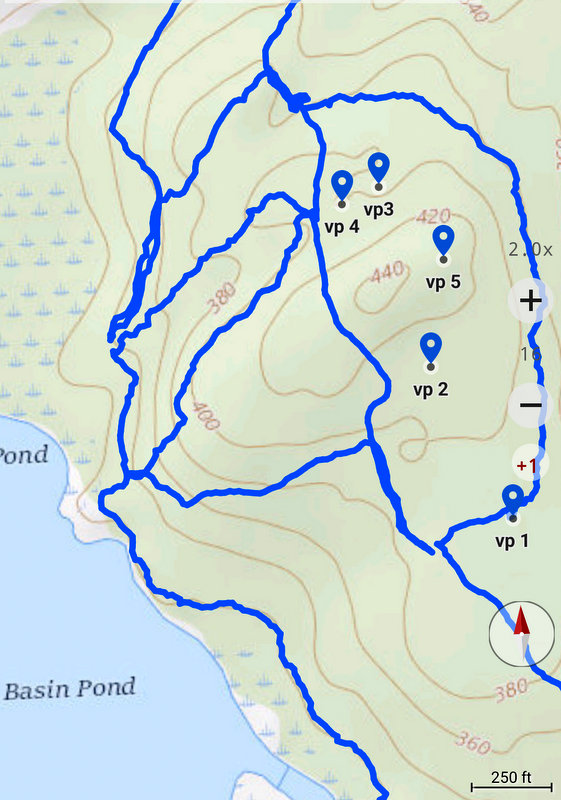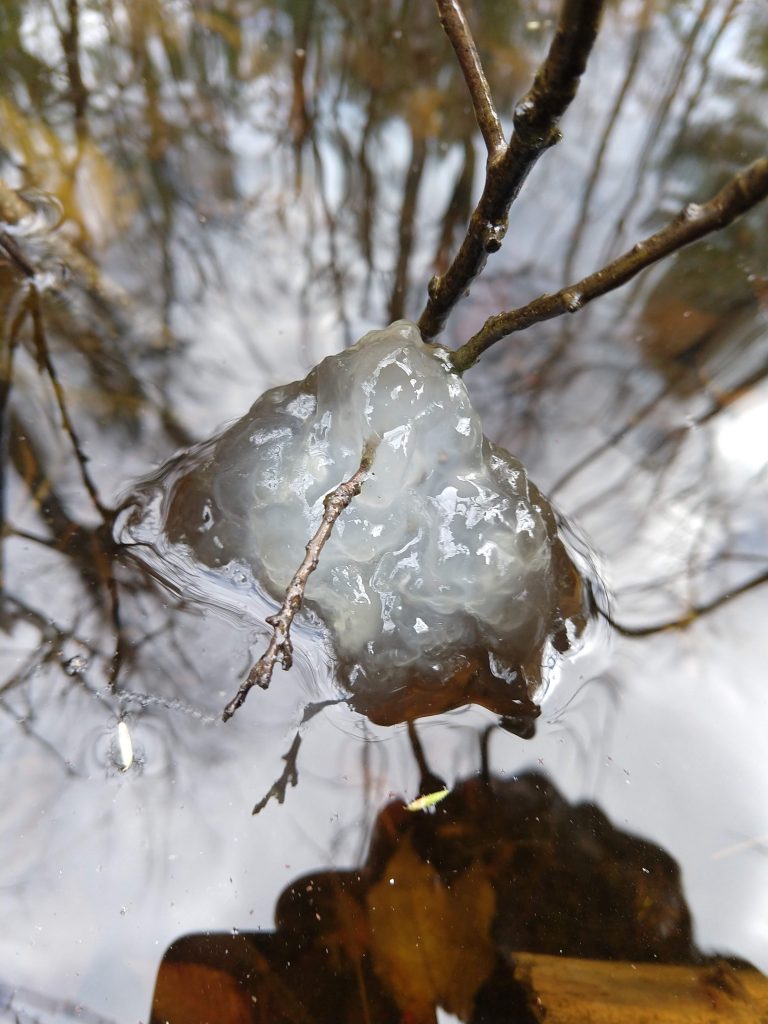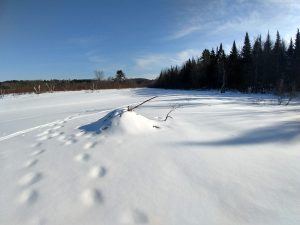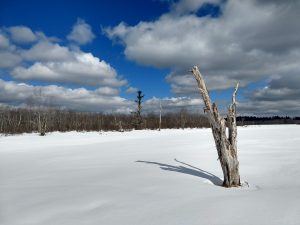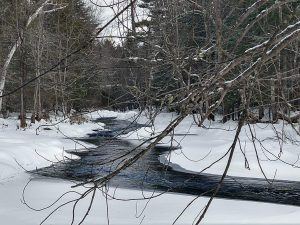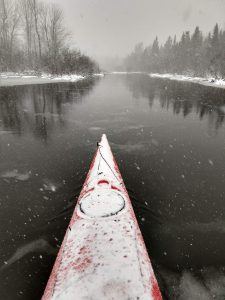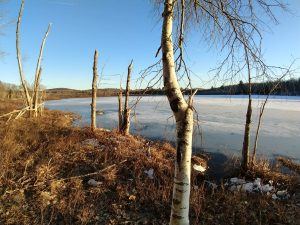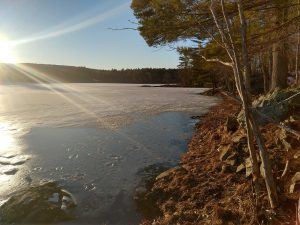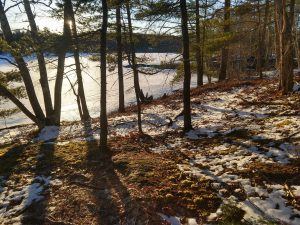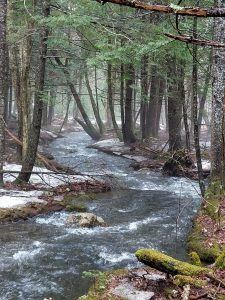All posts by ray@touringkayaks.com
Vernal Pools — Don’t Blink or you’ll Miss ’em!
In early spring, as the snow melts and the earth thaws, the hearts of tiny frogs and salamanders who have lain in the earth over the winter also thaw and start beating. As these creatures warm up and start moving, they begin to pilgrimage toward the small seasonal pools where they themselves hatched in a previous spring.
Like a tent city that is transformed from an empty lot to a bustling metropolis within the course of a couple of weeks, a vernal pool rapidly morphs from a seemingly lifeless pond to a “grand central station” of the spring forest. Another name for vernal pools is “ephemeral pools” — so called because they are transitory and temporary.
As I learn more about vernal pools, I am struck by the fact that the lives of so many forest creatures intersect there and that they are so critical to the survival of so many species.
Maybe you’ve heard of upwellings in the ocean, places where cold nutrient rich water rises to the surface and — once mixed with sunlight –becomes a catalyst for an explosive growth of phytoplankton. The phytoplankton in turn supports a profusion of marine life including fish and sea birds.
Vernal pools and the creatures that inhabit them are the upwellings of the forest. The flow of nutrients they receive is in the form of the frogs and salamanders that return to them each spring in order to mate and lay eggs. These amphibians and their offspring are, in turn, food for a wide variety of forest creatures including turtles, snakes, ducks, herons, foxes, skunks, and raccoons. Like upwellings in the ocean but on a much smaller scale, vernal pools are nutrient powerhouses of the local food web.
Species that commonly inhabit Maine’s vernal pools include wood frogs, spotted salamanders, and fairy shrimp. For these creatures, the fact that vernal pools are by definition temporary is a deal-maker. In fact, without vernal pools, these creatures cannot successfully reproduce. The reason for this is that their eggs are gobbled up by fish, if fish are present. So a key to the survival of these creatures is laying their eggs in waters that do not have fish. Pretty smart, huh?
While frogs and salamanders are amphibious and can simply hop or crawl away from the vernal pool by the time it dries up in summer, fairy shrimp have no such option. Their solution is to have a short life span — and to lay hardy eggs that can survive heat, cold, and dry conditions until the pool fills up the next spring. How do fairy shrimp populations come to inhabit a pool far from others and high up on a hillside, one might ask? Turns out that the same ducks that feed on the adult shrimp inadvertently transfer shrimp eggs from one pool to another via their webbed feet.
Want to see some vernal pools yourself? In this part of Maine, May is the perfect time of year to check for egg masses of frogs and salamanders. The town land at Basin Pond has five vernal pools that can be accessed off the Basin Pond Trail system. Hiking the trails and visiting the pools can be done in just a couple of hours and makes a great family trip. Maps and additional resources are below.
GPS Coordinates to Vernal Pools at Basin Pond in WGS84 Format
VP #1: 44.590083 degrees N, -69.066909 degrees W
VP #2: 44.591411 degrees N, -69.067816 degrees W
VP #3: 44.59297 degrees N, -69.068345 degrees W
VP #4: 44.592836 degrees N, -69.068796 degrees W
VP #5: 44.592325 degrees N, -69.067605 degrees W
———————————————————
Resources:
Basin Pond Trails — Printable Map (pdf format)
Fact Sheet: Vernal Pools (Maine DEP)
Significant Vernal Pool Habitat (Maine DEP)
The National Wildlife Federation: Wood Frog
Forest Ephemera: Vernal Pools
–Hearty thanks to Don Phillips of Phillips EcoServices for initially identifying and mapping these five vernal pools on the Monroe town land near Basin Pond.
Ice Biking The Basin
A few times each winter, Basin Pond and the nearby river and wetlands flood and freeze, producing an” icescape” several square miles in size. This beautiful and varied icy landscape is all but inaccessible to skiers, snowshoers, or hikers but can be explored on a bike — provided the bike is fitted out with studded tires.
The video above was shot over several seasons and features ice biking on Basin Pond, the Marsh Stream, and parts of the Jones Bog. Interested in ice biking Basin Pond? Let us know, and we’ll put you on an email list to let you know next time conditions are just right!
Snow Day at Basin Pond
Thursday morning, Jan. 16, brought a few inches of fluffy white snow, not yet quite enough to ski on, so we took our plus-tire mountain bikes out for a spin in the woods and on the pond.
2020: A Year Outside
Facebook shows me pictures of sunrises, while I am still under the covers, reading in bed. Some of my friends are already out there, in the big world, outside. Shouldn’t I also be?
I enjoy being outside in all of Maine’s seasons. I get out there almost every day. I’m outside more than the vast majority of Americans, who reportedly spend an average of only 7 percent of their time outside. But I’d like to get outside earlier in the day. I’d like to more fully live the truth that there is no bad weather, just poor clothing choices. With the right gear and the right attitude, any day can be experienced as a wonder. I also know that all those hours inside, crooking my neck at one screen or another, aren’t that good for my body. Or my spirit. My job as a public school teacher doesn’t get to be an excuse. I don’t need to wait retirement to get outside more; I can do it now.
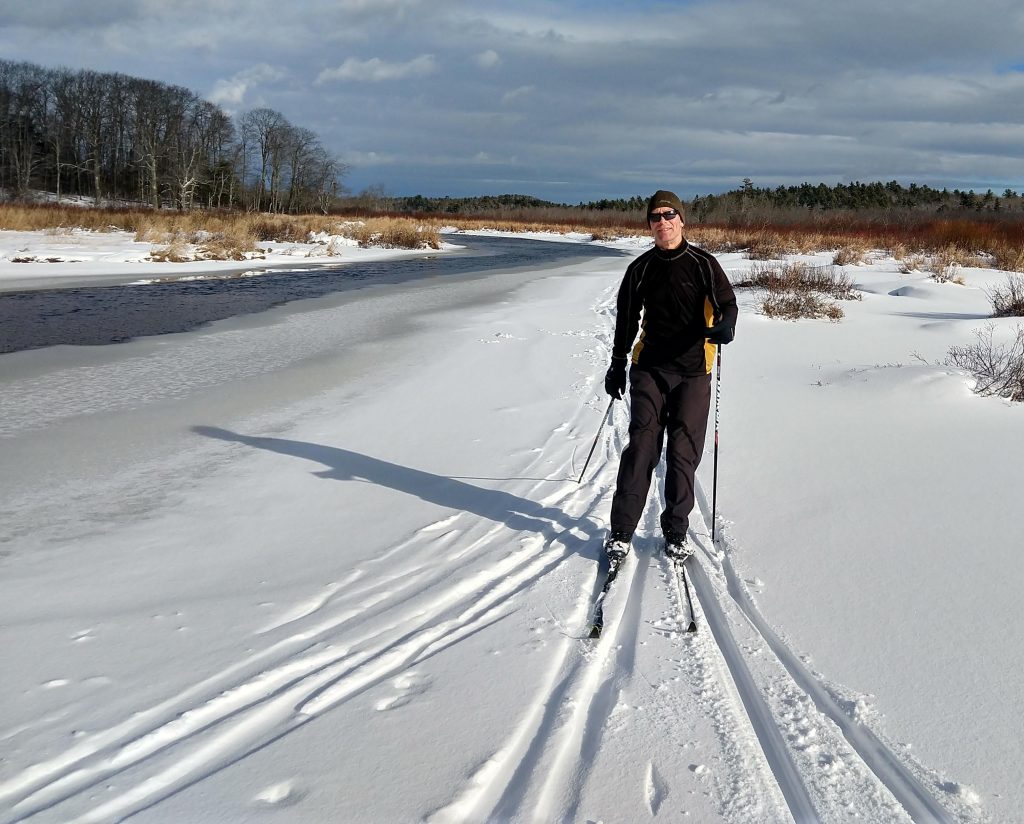
With the above thoughts in mind, I started thinking about how I could challenge myself and maybe inspire a few others to get outside more — and the idea for “The Basin Pond Challenge: A Year Outside” was born.
Here are the details of the Basin Pond Challenge. You can tweak the rules and start your year outside on any date.
–-an hour outside each day for a year
–One “new-to-me“ natural place each week
–One sunrise and one moonrise each month
–Take photos, bring others along, have fun!
Track our Year Outside / Photos:
The Basin Pond Challenge: A Year Outside
For more reading:
“U.S. Study Shows Widening Disconnect with Nature . . . “
“The Nature of Americans”
Basin Pond Trails Day
Saturday, October 19 at 10am
Walk the new trails!
All are welcome.
Park on the south side of Route 139, near the old logging road, 3 miles west of Monroe village.
1 mile and 2.5 mile hikes will be offered.
This is your chance to check out the new hiking trail system on the town land, learn about plans for the future, and/or to get involved. We’ll be packing out the trails for skiing and snowshoeing this winter, so this is a great opportunity to get to know the trails. Hike with a group or hike on your own.
This event is sponsored by the Monroe Conservation Commission. For more information, call or text Ray Wirth at 207-513-0157
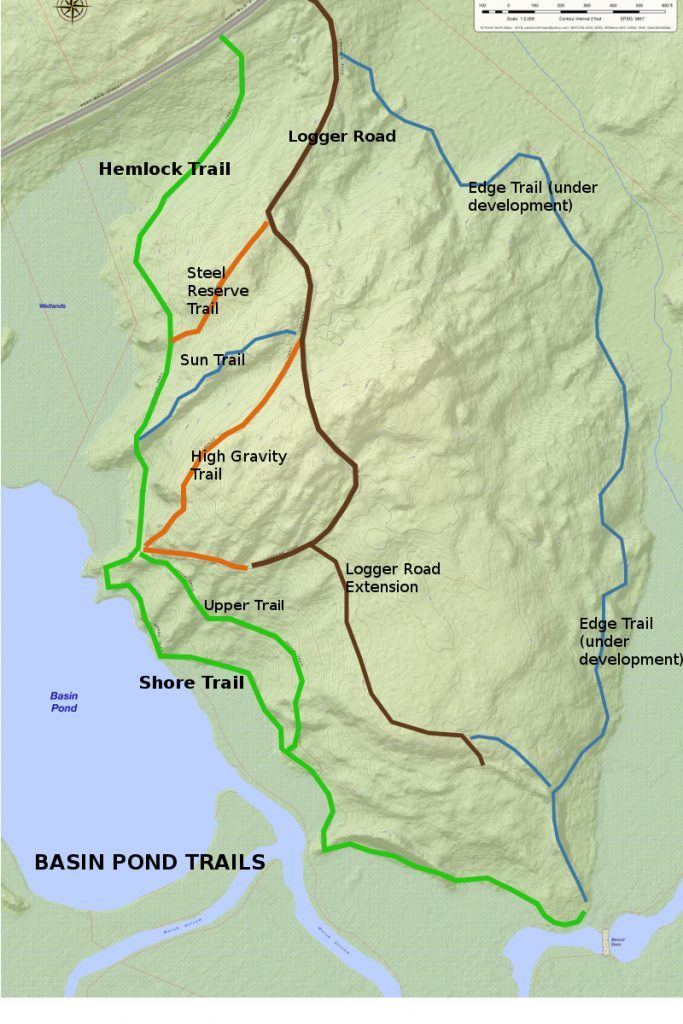
Early October
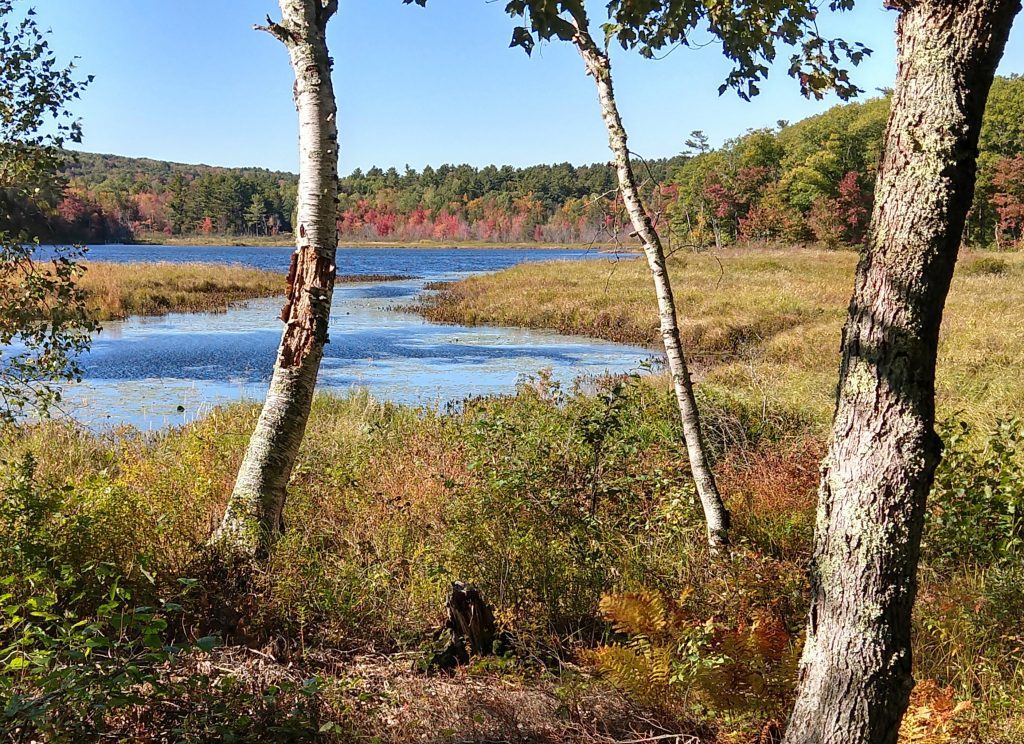
Summer Afternoon on Basin Pond
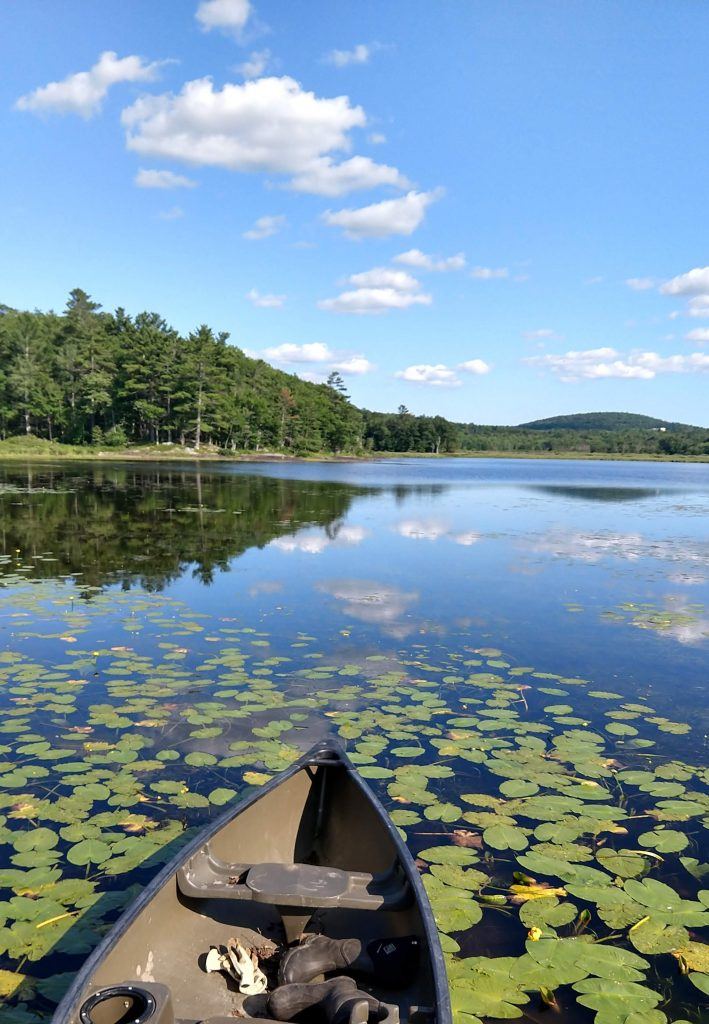
..
Basin Pond Trail system
We’re working with the Town of Monroe and the Monroe Conservation Commission to develop several miles of multi-use (hiking, skiing, snowshoeing) trails on the town land on the east side of Basin Pond.
To access the trails, park along the Route #139 near the “Logger Road” (see map below). From there, we recommend walking 40 yards west on Route 139 to the trailhead (marked with green flagging tape) for the Hemlock Trail. Follow the Hemlock Trail to Basin Pond, then continue on the Shore Trail.

The Shore Trail leads southeast along the pond and then parallels the Marsh Stream. Once at the end of the Shore Trail (southernmost point on the map), you have an option of retracing your steps or heading uphill on the Edge Trail, then taking the Logger Road Extension and Logger Road back to Route 139. Round trip distance is about 2 miles.
